The Eight
Katherine Neville
Katherine Neville's debut novel is a postmodern thriller set in 1972 ... and 1790. In the 20th century, Catherine Velis is a computer expert with a flair for music, painting, and chess who, on her way to Algeria at the behest of the accounting firm where she is employed, is invited to take a mysterious moonlighting assignment: recover the pieces of an old chess set missing for centuries.
In the midst of the French Revolution, a young novice discovers that her abbey is the hiding place of a chess set, once owned by the great Charlemagne, which allows those who play it to tap into incredible powers beyond the imagination. She eventually comes into contact with the major historical figures of the day, from Robespierre to Napoleon, each of whom has an agenda.
The Eight is a non-stop ride that recalls the swashbuckling adventures of Indiana Jones as well as the historical puzzles of Umberto Eco which, since its first publication in 1988, has gone on to acquire a substantial cult following.
0345419081
Designing Web Usability
Jakob Nielsen
Creating Web sites is easy. Creating sites that truly meet the needs and expectations of the wide range of online users is quite another story. In Designing Web Usability: The Practice of Simplicity, renowned Web usability guru Jakob Nielsen shares his insightful thoughts on the subject. Packed with annotated examples of actual Web sites, this book sets out many of the design precepts all Web developers should follow.
This guide segments discussions of Web usability into page, content, site, and intranet design. This breakdown skillfully isolates for the reader many subtly different challenges that are often mixed together in other discussions. For example, Nielsen addresses the requirements of viewing pages on varying monitor sizes separately from writing concise text for "scanability." Along the way, the author pulls no punches with his opinions, using phrases like "frames: just say no" to immediately make his feelings known. Fortunately, his advise is some of the best you'll find.
One of the unique aspects of this title is the use of actual statistics to buttress the author's opinions on various techniques and technologies. He includes survey results on sizes of screens, types of queries submitted to search portals, response times by connection type and more. This book is intended as the first of two volumes—focusing on the "what." The author promises a follow-up title that will show the "hows" and, based on this installation, we can't wait. —Stephen W. Plain
Topics covered: Cross-platform design, response time considerations, writing for the Web, multimedia implementation, navigation strategies, search boxes, corporate intranet design, accessibility for disabled users, international considerations, and future predictions.
156205810X
Prioritizing Web Usability
Jakob Nielsen, Hoa Loranger
In 2000, Jakob Nielsen, the world’s leading expert on Web usability, published a book that changed how people think about the Web—Designing Web Usability (New Riders). Many applauded. A few jeered. But everyone listened. The best-selling usability guru is back and has revisited his classic guide, joined forces with Web usability consultant Hoa Loranger, and created an updated companion book that covers the essential changes to the Web and usability today. Prioritizing Web Usability is the guide for anyone who wants to take their Web site(s) to next level and make usability a priority! Through the authors’ wisdom, experience, and hundreds of real-world user tests and contemporary Web site critiques, you’ll learn about site design, user experience and usability testing, navigation and search capabilities, old guidelines and prioritizing usability issues, page design and layout, content design, and more!
0321350316
Master and Commander
Patrick O'Brian
Since Patrick O'Brian launched his series of historical novels with Master and Commander in 1970, millions of readers have enjoyed the adventures of Captain Jack Aubrey and his friend, surgeon Stephen Maturin. O'Brian's prose, so immediate and yet so distinctly capturing the language and culture of the English navy in the first moments of the 19th century, rolls effortlessly off the tongue of actor Robert Hardy. Never for a second do we doubt that this is the way an English naval officer would have expressed himself in 1800, and that these are the sights, sounds, and emotions he encountered. As Aubrey sails his ship into battle, we don't need the sounds of cannon to share this moment with him; Hardy's voice is the ideal instrument. (Running time: 4.5 hours, three cassettes) —Lou Schuler
0393325172
Mrs Frisby and the Rats of Nimh
Obrien
There's something very strange about the rats living under the rosebush at the Fitzgibbon farm. But Mrs. Frisby, a widowed mouse with a sick child, is in dire straits and must turn to these exceptional creatures for assistance. Soon she finds herself flying on the back of a crow, slipping sleeping powder into a ferocious cat's dinner dish, and helping 108 brilliant, laboratory-enhanced rats escape to a utopian civilization of their own design, no longer to live "on the edge of somebody else's, like fleas on a dog's back."
This unusual novel, winner of the Newbery Medal (among a host of other accolades) snags the reader on page one and reels in steadily all the way through to the exhilarating conclusion. Robert O'Brien has created a small but complete world in which a mother's concern for her son overpowers her fear of all her natural enemies and allows her to make some extraordinary discoveries along the way. O'Brien's incredible tale, along with Zena Bernstein's appealing ink drawings, ensures that readers will never again look at alley rats and field mice in the same way. (Ages 9 to 12) —Emilie Coulter
0689704135
|
Star Trek Chronology — the History of the Future
Okuda
A comprehensive chronology of Star Trek history begins with the birth of Captain James T. Kirk and his service on the Enterprise to the most recent adventures of Captain Jean Luc Picard and his crew.
0671796119
Animal Farm
George Orwell
Since its publication in 1946, George Orwell's fable of a workers' revolution gone wrong has rivaled Hemingway's The Old Man and the Sea as the Shortest Serious Novel It's OK to Write a Book Report About. (The latter is three pages longer and less fun to read.) Fueled by Orwell's intense disillusionment with Soviet Communism, Animal Farm is a nearly perfect piece of writing, both an engaging story and an allegory that actually works. When the downtrodden beasts of Manor Farm oust their drunken human master and take over management of the land, all are awash in collectivist zeal. Everyone willingly works overtime, productivity soars, and for one brief, glorious season, every belly is full. The animals' Seven Commandment credo is painted in big white letters on the barn. All animals are equal. No animal shall drink alcohol, wear clothes, sleep in a bed, or kill a fellow four-footed creature. Those that go upon four legs or wings are friends and the two-legged are, by definition, the enemy. Too soon, however, the pigs, who have styled themselves leaders by virtue of their intelligence, succumb to the temptations of privilege and power. "We pigs are brainworkers. The whole management and organisation of the farm depend on us. Day and night, we are watching over your welfare. It is for your sake that we drink that milk and eat those apples." While this swinish brotherhood sells out the revolution, cynically editing the Seven Commandments to excuse their violence and greed, the common animals are once again left hungry and exhausted, no better off than in the days when humans ran the farm. Satire Animal Farm may be, but it's a stony reader who remains unmoved when the stalwart workhorse, Boxer, having given his all to his comrades, is sold to the glue factory to buy booze for the pigs. Orwell's view of Communism is bleak indeed, but given the history of the Russian people since 1917, his pessimism has an air of prophecy. —Joyce Thompson
0451519000
Building Learning Communities in Cyberspace: Effective Strategies for the Online Classroom
Rena M. Palloff, Keith Pratt
1999 Winner of the Philip E. Frandson Award for Literature in Continuing Higher Education, from the University Continuing Education Association
"A must read for anyone involved in or considering involvement in online, networked learning.
—Donald J. MacIntyre, president, The Fielding Institute
"A thorough overview of the online course process, including course selection, design, and evaluation, and many of the technical issues that affect the entire process."
—Kathleen M. Rose, distance education specialist, University of California Extension Online
Written for faculty, instructors, and trainers in any distance learning environment, Building Learning Communities in Cyberspace shows how to create a virtual classroom environment that helps students excel academically, while fostering a sense of community. This practical, hands-on guide is filled with illustrative case studies, vignettes, and examples from a wide variety of successful online courses. The authors offer proven strategies for handling challenges that include: Engaging students with subject matterAccounting for attAndance and participationWorking with students who do not participateUnderstanding the signs of when a student is in troubleBuilding online communities that accommodate personal interactionBased on many years of work in information systems and over five years of experience in online distance education, Rena Palloff and Pratt share insights designed to guide readers through the steps of computer-mediated course design and implementation.
0787944602
The Last Lecture
Randy Pausch, Jeffrey Zaslow
"We cannot change the cards we are dealt, just how we play the hand."
—Randy Pausch
A lot of professors give talks titled "The Last Lecture." Professors are asked to consider their demise and to ruminate on what matters most to them. And while they speak, audiences can't help but mull the same question: What wisdom would we impart to the world if we knew it was our last chance? If we had to vanish tomorrow, what would we want as our legacy?
When Randy Pausch, a computer science professor at Carnegie Mellon, was asked to give such a lecture, he didn't have to imagine it as his last, since he had recently been diagnosed with terminal cancer. But the lecture he gave——"Really Achieving Your Childhood Dreams"—wasn—wasn't about dying. It was about the importance of overcoming obstacles, of enabling the dreams of others, of seizing every moment (because "time is all you have...and you may find one day that you have less than you think"). It was a summation of everything Randy had come to believe. It was about living.
In this book, Randy Pausch has combined the humor, inspiration and intelligence that made his lecture such a phenomenon and given it an indelible form. It is a book that will be shared for generations to come.
Questions for Randy Pausch
We were shy about barging in on Randy Pausch's valuable time to ask him a few questions about his expansion of his famous Last Lecture into the book by the same name, but he was gracious enough to take a moment to answer. (See Randy to the right with his kids, Dylan, Logan, and Chloe.) As anyone who has watched the lecture or read the book will understand, the really crucial question is the last one, and we weren't surprised to learn that the "secret" to winning giant stuffed animals on the midway, like most anything else, is sheer persistence.
Amazon.com: I apologize for asking a question you must get far more often than you'd like, but how are you feeling?
Pausch: The tumors are not yet large enough to affect my health, so all the problems are related to the chemotherapy. I have neuropathy (numbness in fingers and toes), and varying degrees of GI discomfort, mild nausea, and fatigue. Occasionally I have an unusually bad reaction to a chemo infusion (last week, I spiked a 103 fever), but all of this is a small price to pay for walkin' around.
Amazon.com: Your lecture at Carnegie Mellon has reached millions of people, but even with the short time you apparently have, you wanted to write a book. What did you want to say in a book that you weren't able to say in the lecture?
Pausch: Well, the lecture was written quickly—in under a week. And it was time-limited. I had a great six-hour lecture I could give, but I suspect it would have been less popular at that length ;-).
A book allows me to cover many, many more stories from my life and the attendant lessons I hope my kids can take from them. Also, much of my lecture at Carnegie Mellon focused on the professional side of my life—my students, colleagues and career. The book is a far more personal look at my childhood dreams and all the lessons I've learned. Putting words on paper, I've found, was a better way for me to share all the yearnings I have regarding my wife, children and other loved ones. I knew I couldn't have gone into those subjects on stage without getting emotional.
Amazon.com: You talk about the importance—and the possibility!—of following your childhood dreams, and of keeping that childlike sense of wonder. But are there things you didn't learn until you were a grownup that helped you do that?
Pausch: That's a great question. I think the most important thing I learned as I grew older was that you can't get anywhere without help. That means people have to want to help you, and that begs the question: What kind of person do other people seem to want to help? That strikes me as a pretty good operational answer to the existential question: "What kind of person should you try to be?"
Amazon.com: One of the things that struck me most about your talk was how many other people you talked about. You made me want to meet them and work with them—and believe me, I wouldn't make much of a computer scientist. Do you think the people you've brought together will be your legacy as well?
Pausch: Like any teacher, my students are my biggest professional legacy. I'd like to think that the people I've crossed paths with have learned something from me, and I know I learned a great deal from them, for which I am very grateful. Certainly, I've dedicated a lot of my teaching to helping young folks realize how they need to be able to work with other people—especially other people who are very different from themselves.
Amazon.com: And last, the most important question: What's the secret for knocking down those milk bottles on the midway?
Pausch: Two-part answer:
1) long arms
2) discretionary income / persistence
Actually, I was never good at the milk bottles. I'm more of a ring toss and softball-in-milk-can guy, myself. More seriously, though, most people try these games once, don't win immediately, and then give up. I've won *lots* of midway stuffed animals, but I don't ever recall winning one on the very first try. Nor did I expect to. That's why I think midway games are a great metaphor for life.
1401323251
The Dante Club: A Novel
Matthew Pearl
The New York Times Bestseller
Boston, 1865. A series of murders, all of them inspired by scenes in Dante’s Inferno. Only an elite group of America’s first Dante scholars—Henry Wadsworth Longfellow, Oliver Wendell Holmes, James Russell Lowell, and J. T. Fields—can solve the mystery. With the police baffled, more lives endangered, and Dante’s literary future at stake, the Dante Club must shed its sheltered literary existence and find the killer.
0812971043
|
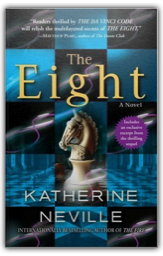

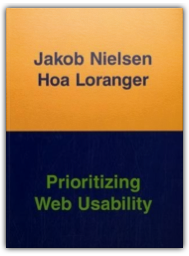

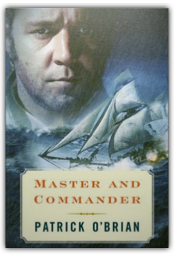

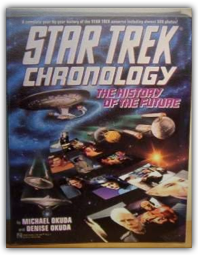


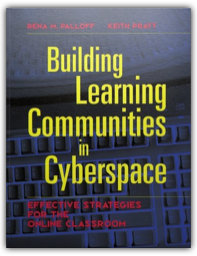
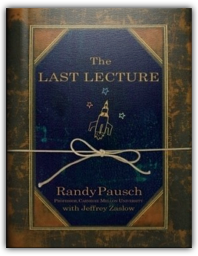
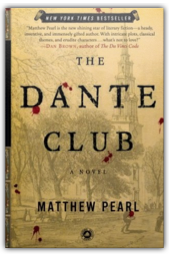




 Made with Delicious Library
Made with Delicious Library